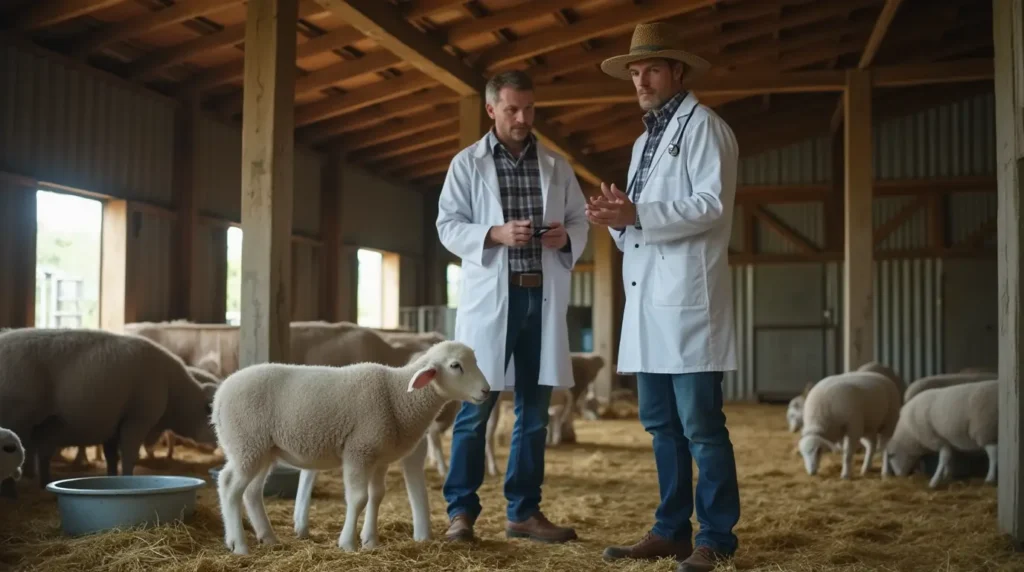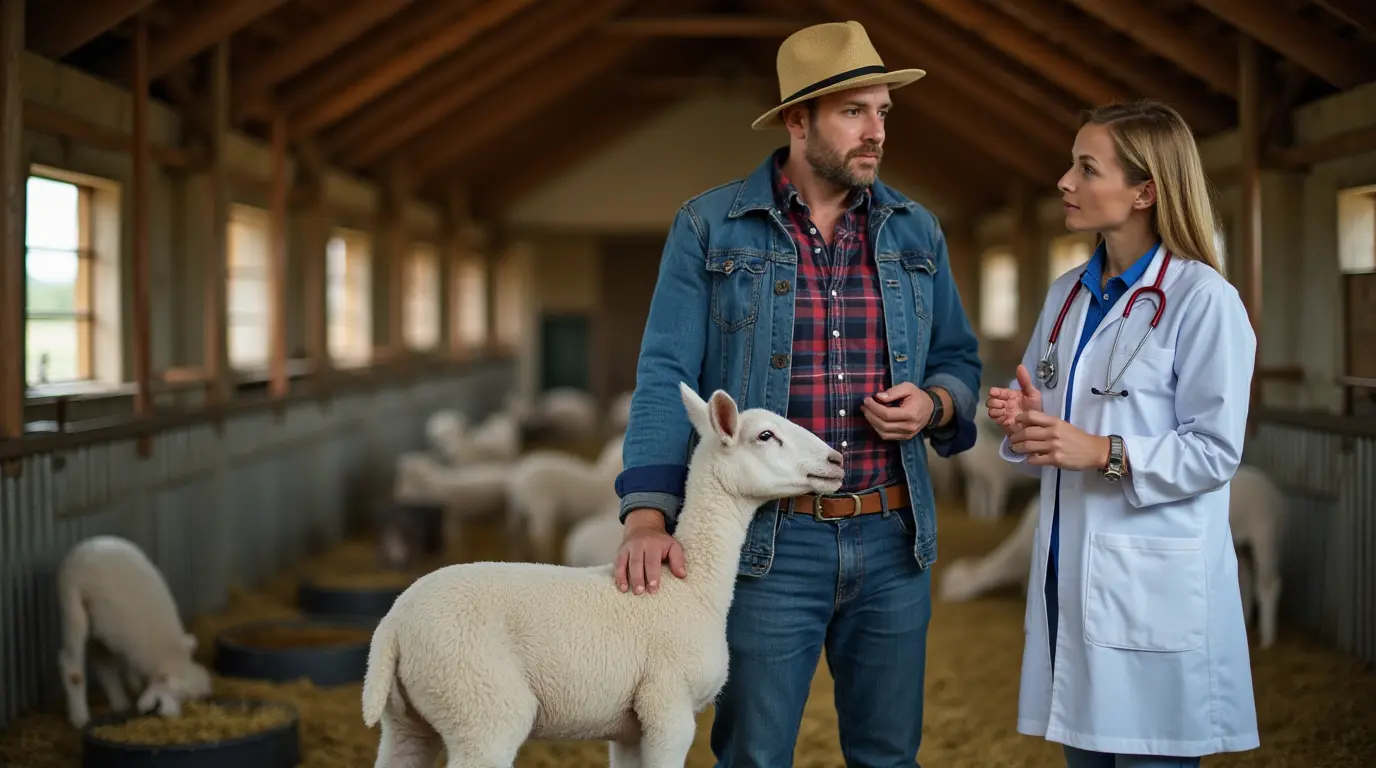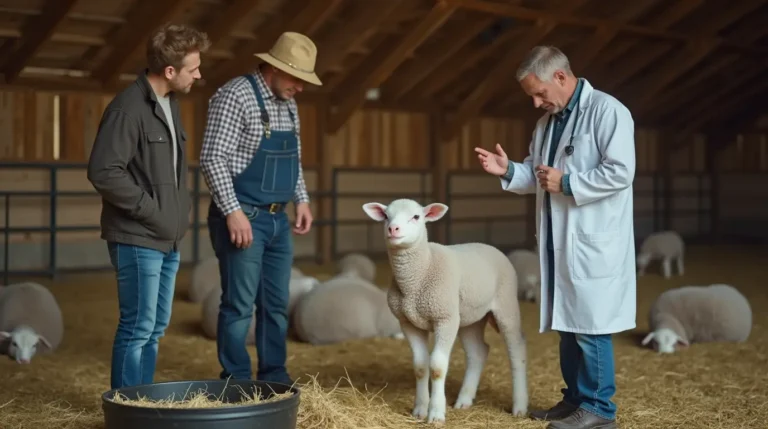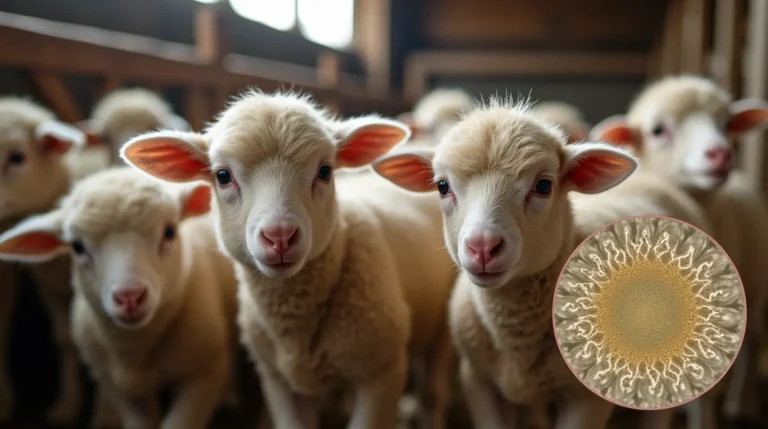Protect your lamb’s health: Learn about vitamin toxicity in lambs , prevention strategies, and critical care tips for optimal livestock nutrition.

Table of Contents
Raising healthy lambs requires more than just good intentions—it demands precise nutritional management. While vitamins are essential for growth and development, an often-overlooked danger lurks in excessive supplementation: vitamin toxicity. This comprehensive guide will explore the critical aspects of vitamin toxicity in lambs, helping shepherds and livestock managers understand, identify, and prevent potentially life-threatening nutritional imbalances.
Understanding Vitamin Toxicity in Lambs
What is Vitamin Toxicity?
Vitamin toxicity occurs when lambs receive excessive amounts of fat-soluble vitamins (A, D, E, and K), which can accumulate in the body and cause severe health complications. Unlike water-soluble vitamins that are easily excreted, these fat-soluble vitamins can build up to dangerous levels, creating a silent but significant health risk.
The Delicate Balance of Nutritional Supplementation
Proper lamb nutrition requires a delicate balance. While vitamins are crucial for development, overcompensation can lead to serious health consequences. Farmers and livestock managers must understand the fine line between adequate supplementation and potential toxicity.
4 Critical Symptoms of Vitamin Toxicity in Lambs
1. Neurological Complications
- Sudden behavioral changes
- Muscle tremors and potential paralysis
- Reduced coordination and motor skills
- Potential seizures in severe cases
2. Skeletal and Muscular Disorders
- Abnormal bone development
- Calcification of soft tissues
- Reduced mobility
- Potential joint stiffness and pain
3. Reproductive and Growth Challenges
- Stunted growth rates
- Reduced fertility
- Developmental abnormalities
- Compromised immune system function
4. Systemic Health Deterioration
- Organ damage, particularly liver and kidney
- Compromised metabolic functions
- Potential long-term health complications
- Increased susceptibility to secondary infections
Prevention Strategies for Vitamin Toxicity
Precise Nutritional Planning
- Consult veterinary nutritionists
- Develop customized feeding protocols
- Regular blood work and nutritional assessments
- Implement gradual and measured supplementation
Quality Supplementation Techniques
- Use pharmaceutical-grade vitamin supplements
- Implement strict dosage controls
- Consider age and weight-specific recommendations
- Monitor individual lamb responses
Risk Factors and Vulnerable Populations
High-Risk Lamb Categories
- Premature lambs
- Lambs with pre-existing health conditions
- Orphaned or bottle-fed lambs
- Lambs in intensive farming environments
Environmental Considerations
- Seasonal nutritional variations
- Forage quality and composition
- Regional mineral content in pastures
- Stress factors affecting nutritional absorption
Diagnostic Approaches
Clinical Assessment Protocols
- Comprehensive blood panel screening
- Detailed clinical examinations
- Advanced metabolic function tests
- Specialized vitamin level measurements
Treatment and Management
- Immediate supplementation cessation
- Supportive veterinary care
- Gradual nutritional rehabilitation
- Long-term monitoring and recovery planning
Recommended Products on Amazon
- Digital Livestock Scale
- Professional Veterinary Vitamin Testing Kit
- Precision Liquid Supplement Dispenser
- Comprehensive Livestock Health Monitoring Handbook
Vitamin Toxicity in Lambs (FAQ)
Q1: How quickly can vitamin toxicity develop in lambs?
Vitamin toxicity can develop gradually or suddenly, depending on supplementation levels and individual lamb characteristics. Continuous high-dose supplementation poses the greatest risk.
Q2: Are certain vitamins more dangerous than others?
Vitamins A and D are particularly problematic due to their fat-soluble nature and potential for significant accumulation in bodily tissues.
Q3: Can vitamin toxicity be completely reversed?
Early detection and intervention can mitigate many symptoms. However, some long-term complications might persist, emphasizing prevention over treatment.
Q4: How often should lamb vitamin levels be checked?
Recommended frequency is quarterly, with more intensive monitoring for high-risk populations or during critical developmental stages.
Call to Action
Protecting your lamb’s health requires knowledge, vigilance, and proactive management. Share your experiences, consult professionals, and continue learning about optimal livestock nutrition.
Conclusion
Vitamin toxicity in lambs represents a complex nutritional challenge requiring comprehensive understanding and strategic management. By recognizing symptoms, implementing precise supplementation protocols, and maintaining vigilant health monitoring, shepherds can safeguard their livestock’s well-being.
Knowledge is your most powerful tool—stay informed, stay proactive, and prioritize your lambs nutritional health.





